On Wednesday, July 28, Place Lab hosted the opening Session of our year-long Ethical Redevelopment Salon. In this entry, Place Lab Building Strategies + Construction Manager, Mejay Gula, reports on the Session.
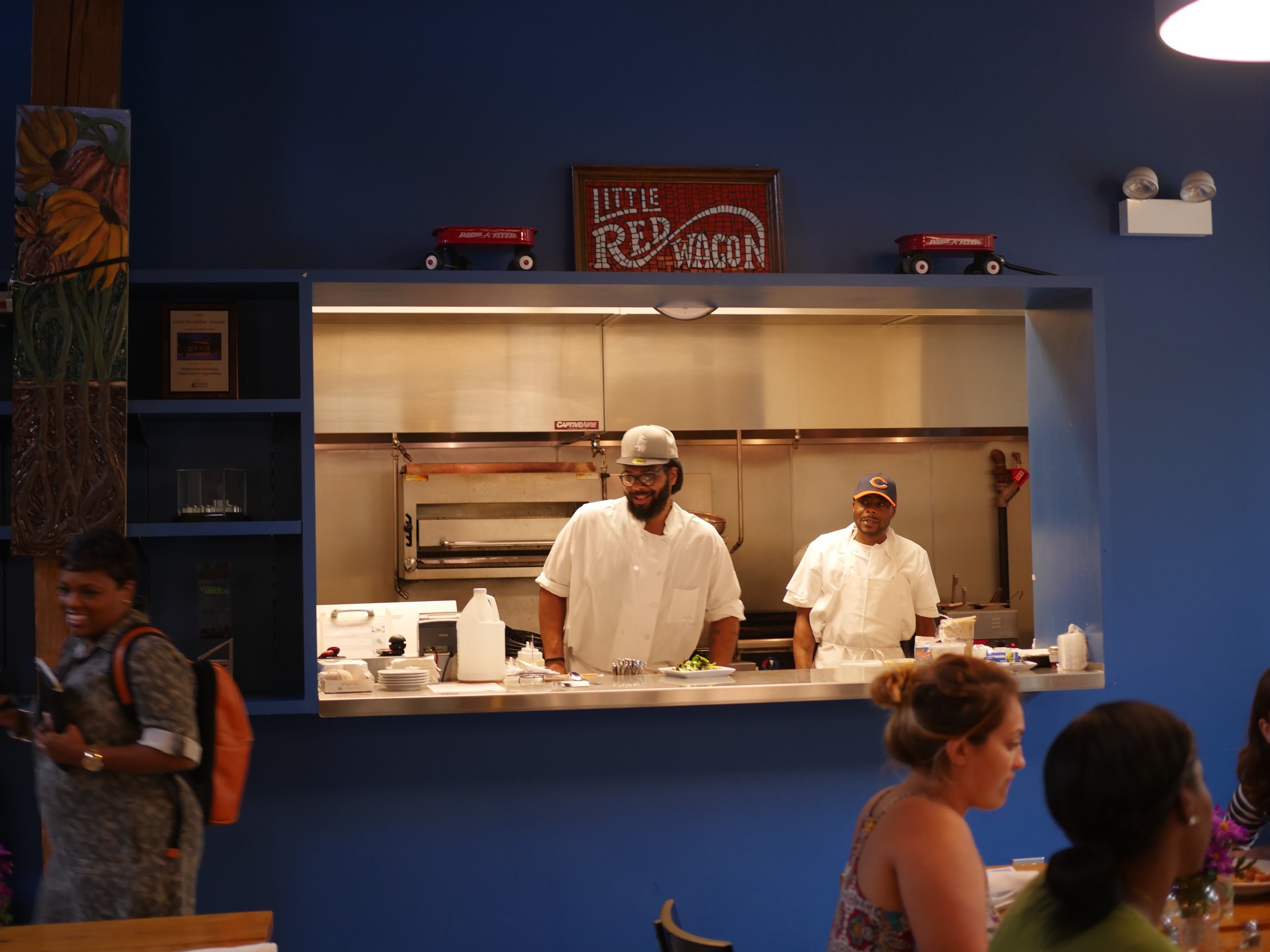
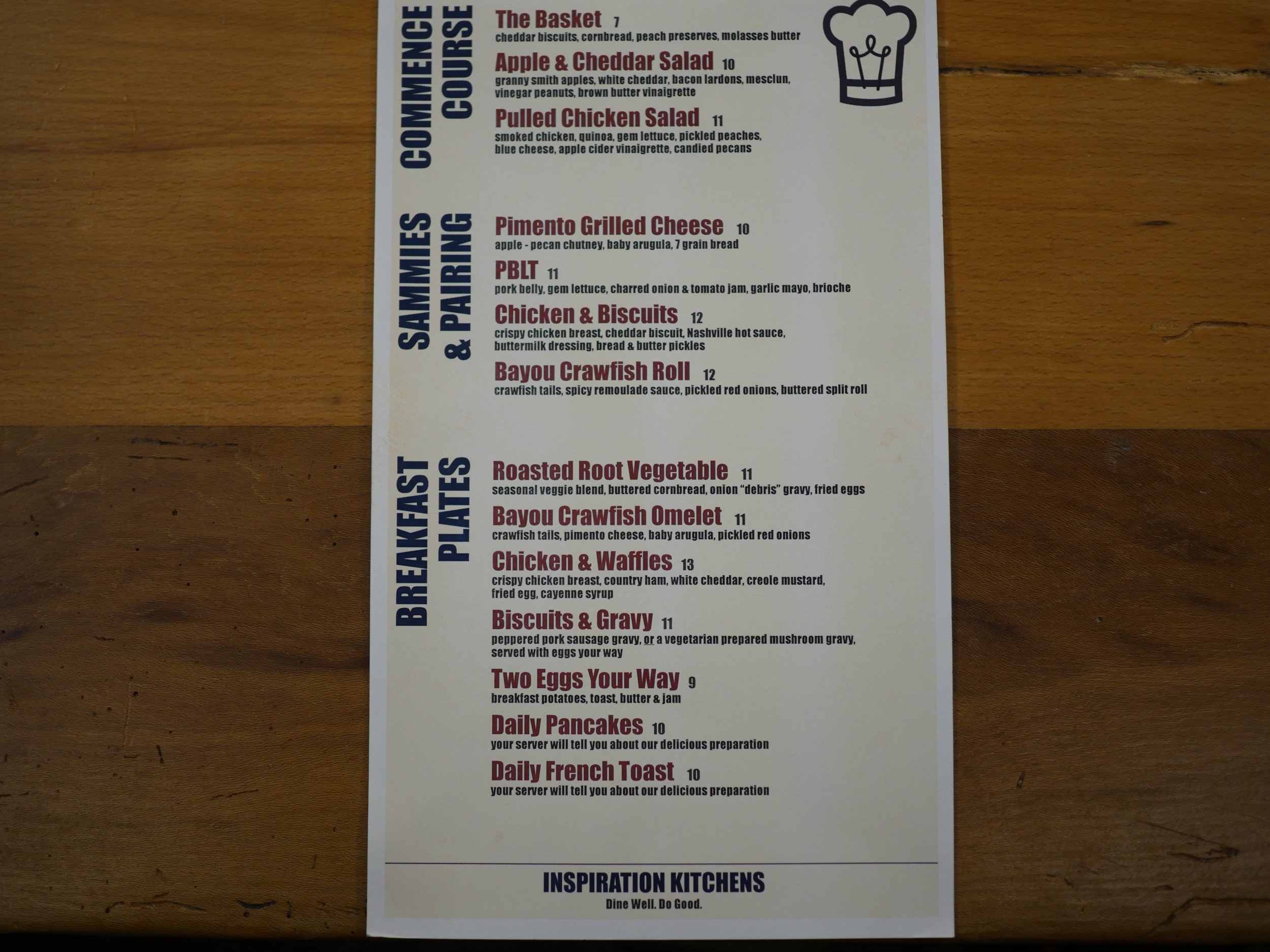
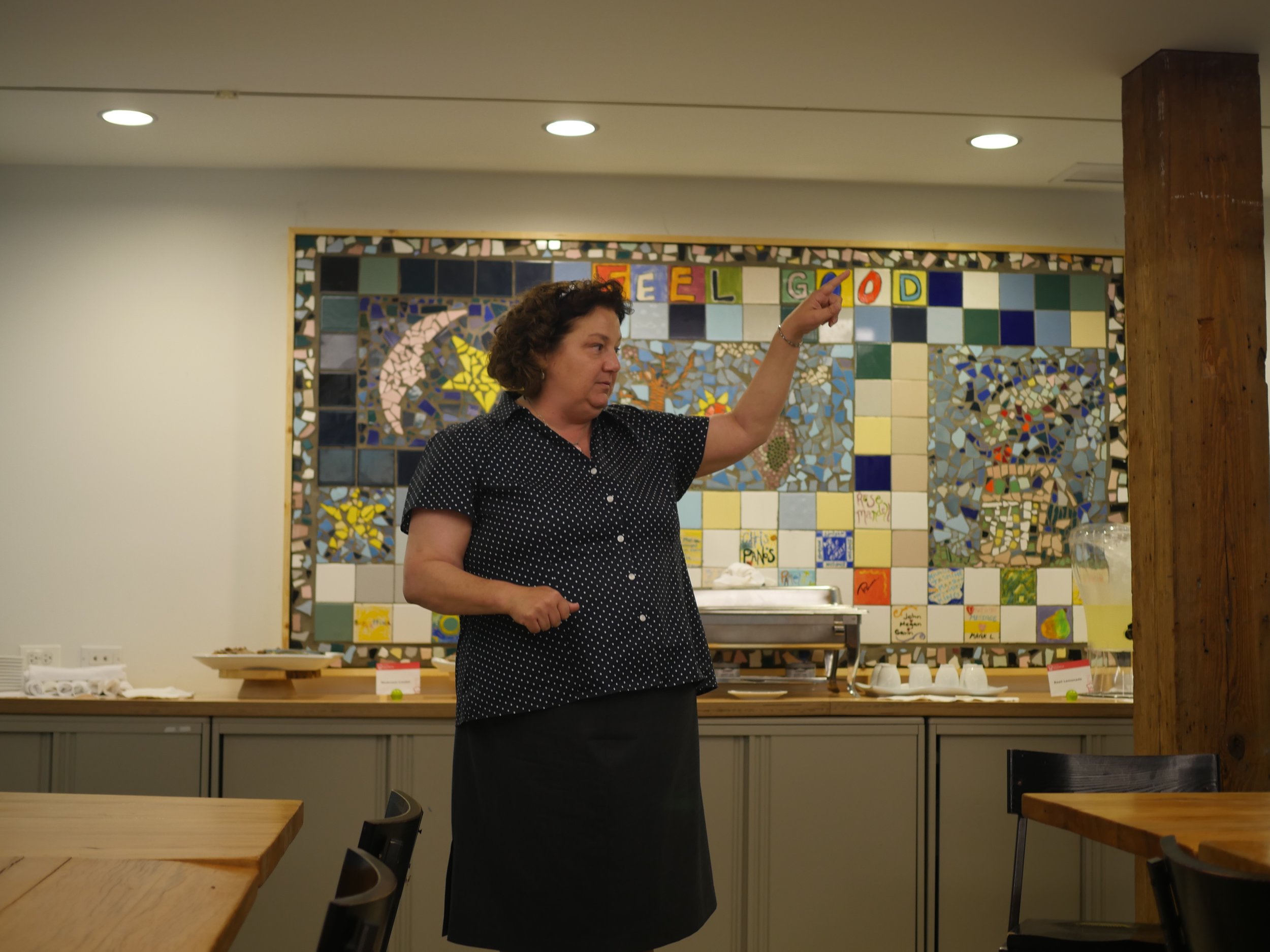
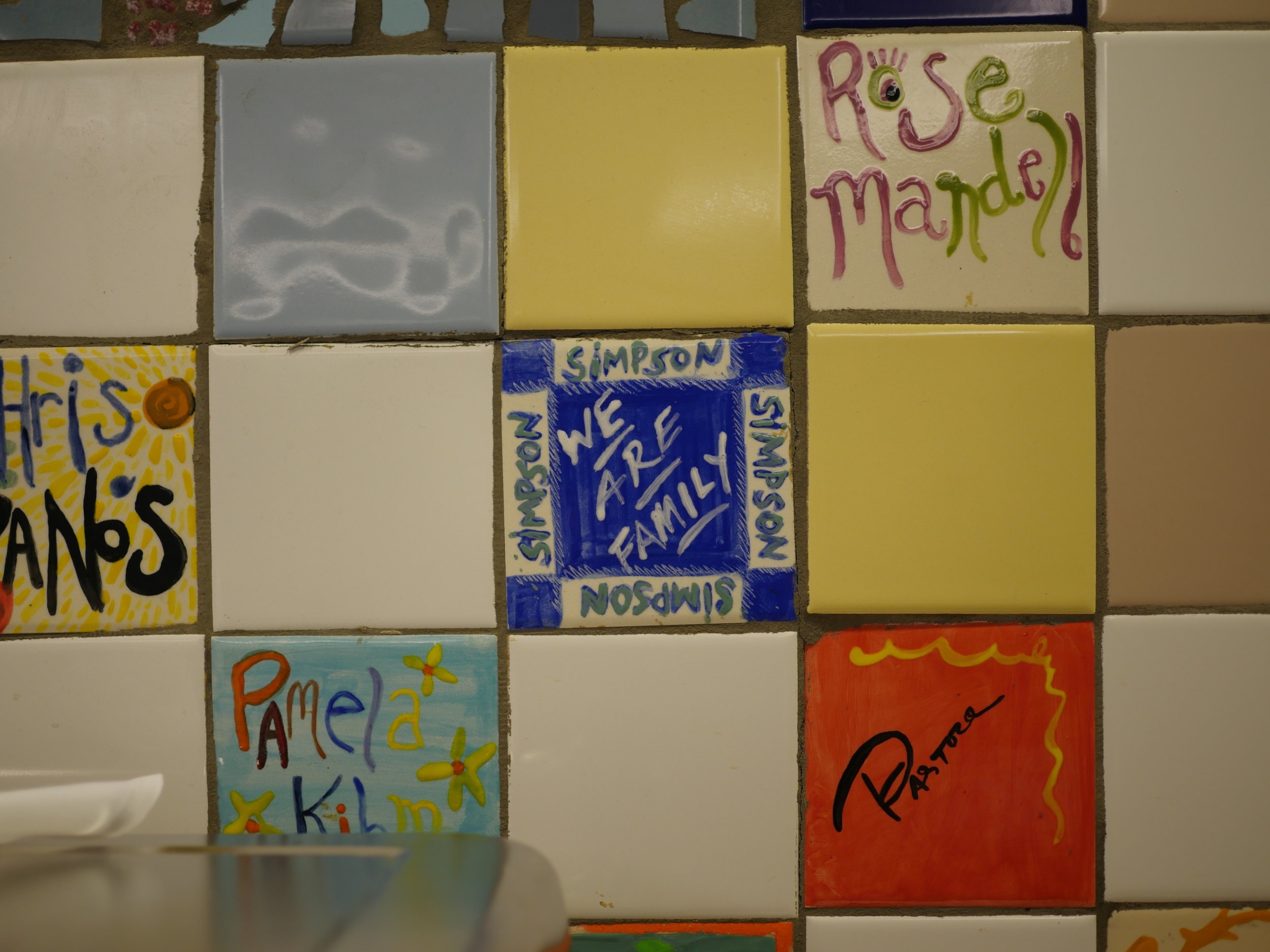
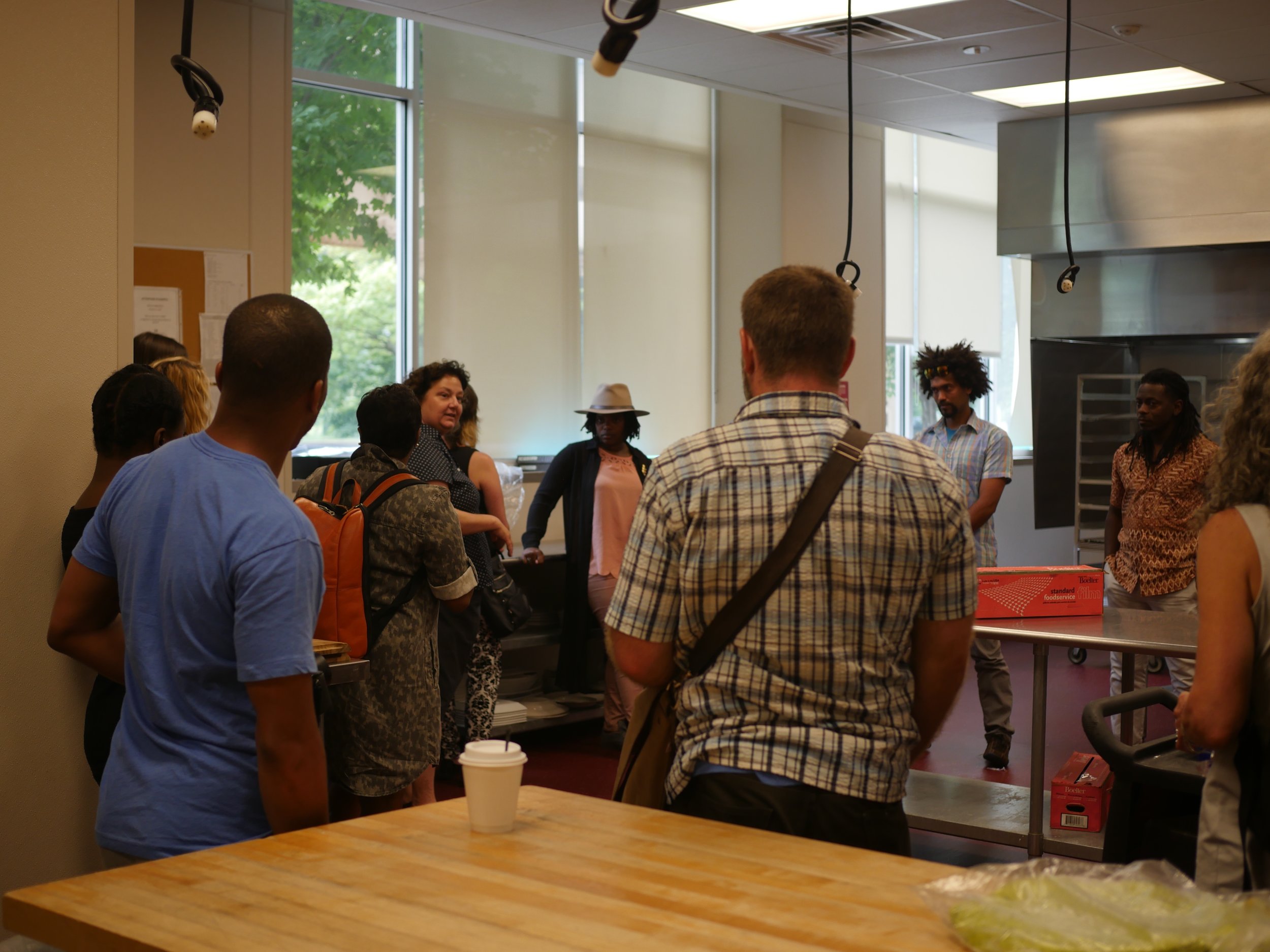
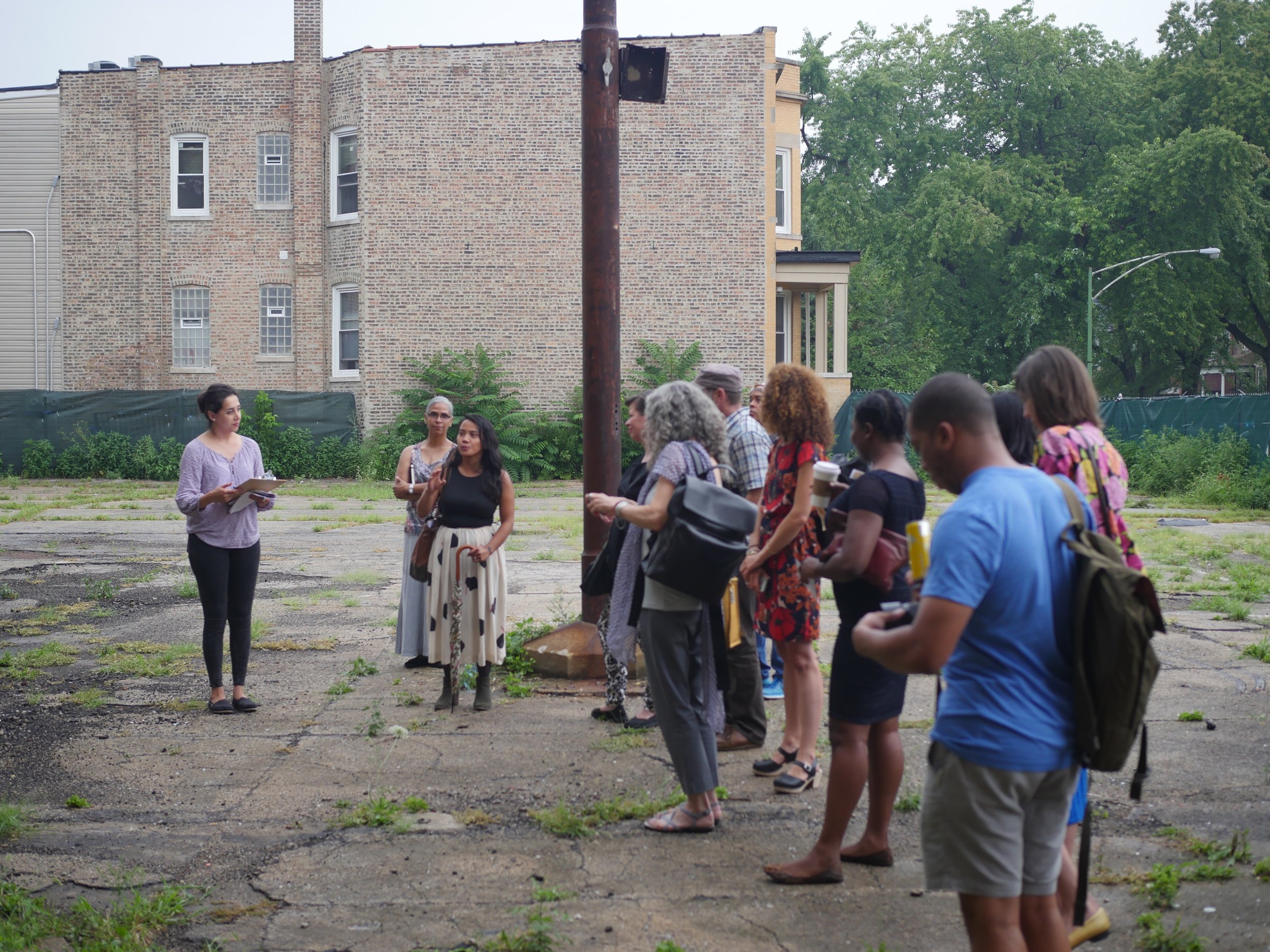

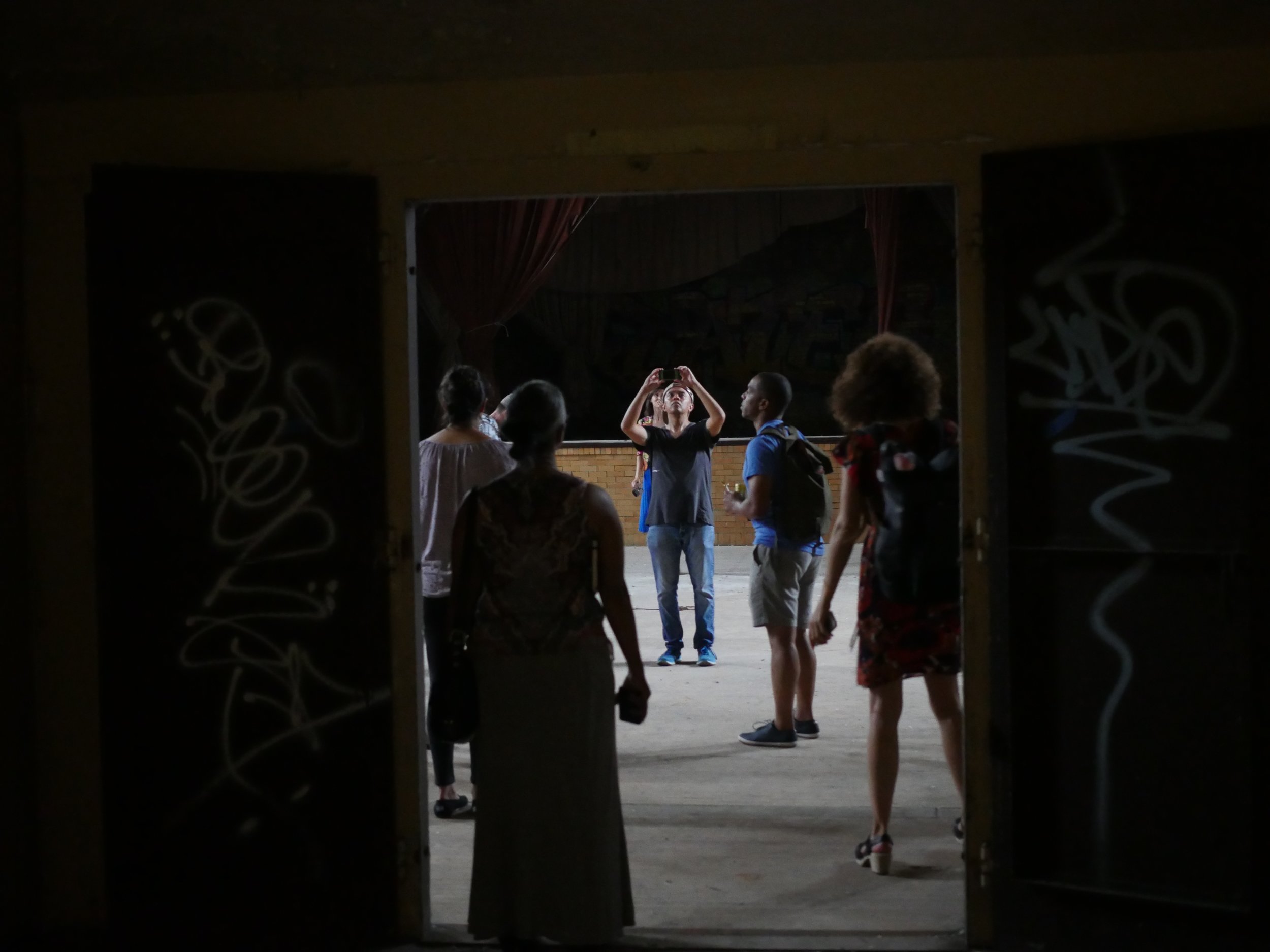
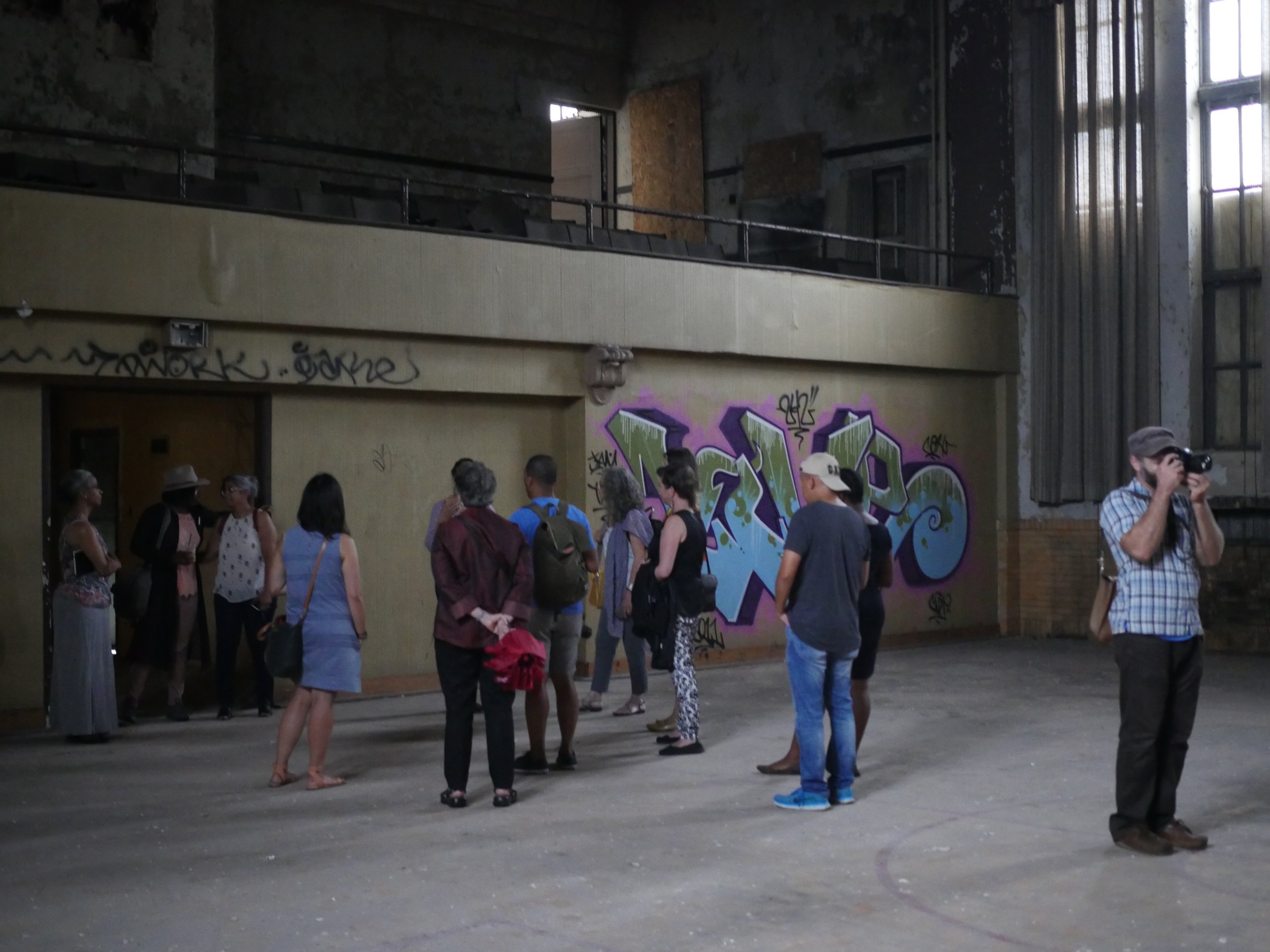
PRELUDE
Rain didn’t deter pre-Salon tour participants from venturing through the fenced-in construction zones of St. Laurence Elementary School or a former ComEd Substation, nor did it stop the lunch and tour excursion to Inspiration Kitchens. These optional excursions are designed to expose Salon members to people, projects, and places that are engaged in inspirational, community-based, ethically-minded civic projects in Chicago.














PART I
“The goal is to get into the weeds of practical ideas, questions, concerns, tips, and how-tos.”
On a grey, muggy Thursday evening, 50 Ethical Redevelopment Salon members and invited guests packed an intimate and private gallery space at the Stony Island Arts Bank. It was the first of nine Salon Sessions and provided the first opportunity for members to be open, inspire, share, and commune among a diverse group of practitioners representing several cities across the country.
The Session kicked off with a warm welcome from moderator Steve Edwards, and stage-setting commentary from Theaster Gates:
“Our hope is that today will be a day of starting to dig in. The first big Convening was a poetic introduction to the ideas around Ethical Redevelopment, nine ideas that are not meant to be turned into Biblical law, nor are they nine steps that will lead you to a perfect development. These were ideas to get the party started. The intentions for the Salon Sessions are to go in-depth to the nitty-gritty about some of the work you’ll see presented today and to engender conversation where you can bring all of your projects, perspectives, and experience to the table. The goal is to get into the weeds of practical ideas, questions, concerns, tips, and how-tos.”
The Session focused on Principal #1: Repurpose + Re-propose. Taking words from the Ethical Redevelopment booklet: This approach to city- or community-building is about resource availability and ingenuity—start with what you have and recognize existing local assets and latent value in the discarded and overlooked. Theaster advised to “not only start with what you have but look at what you have and scratch your head and ask what else it can be? What I think is often left off the table in development is how important vision is to the process. We want to start off by acknowledging the power and importance of vision in the re-proposing process.”
Salon members were assured that the Session was an environment of trust, where participants were encouraged to be open, honest, and released from their most scared and vulnerable moments and challenges. The hope is that this Salon experience can be taken back home to be used as a template to create new sets of values for the members’ local teams.
Place Lab’s Lead Design Manager, Nootan Bharani, and Bucky Willis of Bleeding Heart Design in Detroit, each presented on creative reclamation projects. The presentations summarized, for discussion by the group, the projects’ challenges.
Nootan presented on the St. Laurence Elementary School redevelopment project in Chicago’s Greater Grand Crossing neighborhood. The school, once slated for demolition following its closure in 2002, is the focus of a creative reuse project that aims to make the property a hub of artistic, educational, and economic activity.
Nootan Bharani presenting on the St. Laurence Elementary School project.
As Nootan described it, conventional methods of refurbishing dormant properties—methods that are profit-driven—are being set aside in favor of Conscientious Intervention, a people-driven approach for redevelopment that is implemented in all of Theaster’s building projects. Conscientious Intervention is based on vision, intuition, indeterminacy, and creative adaptations that are concerned with the greatest benefit for the community, not the pocketbook of the developer. Nootan cautioned that this approach to reimagining a building’s use often takes the path of most resistance.
Nootan discussed some of the complexities of Repurposing + Re-proposing: the initial building acquisition, the headaches of as-built conditions and structural failures, concerns about vagrancy and illegal dumping, the obstacles that accompany remediation, and rigid zoning laws. All of these roadblocks, Nootan explained, are simply part of “allowing one thing to become another.”
The zoning ordinance governing St. Laurence favors certain uses and densities of specific areas. Those uses and densities, she stressed, were established in a by-gone time and environment; the factors that shaped the initial zoning ordinance are no longer applicable to the area as it exists today.
“It just doesn’t, by right, allow for the uses we envision,” Nootan said.
Theaster’s project team, led by Nootan, is going through an uncharted process with the City of Chicago to find a solution to the zoning problem. The outcome of this process could establish St. Laurence as a model for how old ordinances can be made to accommodate modern redevelopment.
During the discussion that followed, Theaster offered great insight into what I have found can be a significant hurdle for small, grassroots organizations and creative entrepreneurs: understanding the law. A city’s zoning laws can read like a foreign language to the uninitiated. Developers with sufficient capital often move their projects forward with the aid of lawyers to translate and, if necessary, make the case for why the developer’s project should not be held to the ordinance. But the types of projects that Salon members and Place Lab are tackling simply do not have that type of capital, and making things happen requires a bit of creativity.
“There’s a sliding scale of feasibility, changing code, access to lawyers—the amount of money—and you have to put these things into a calculus,” Nootan continued. “If you don’t have the money, it will take you a little longer unless you get advocates in the city to believe in the new thing that you want to do. You might need to read into the zoning of your city, bringing to attention something the city council wasn’t aware of and find someone there that can help you.”
Confronting the list of impediments to a redevelopment effort can be discouragingly overwhelming, and too often leads to incomplete or failed projects. I sensed that some of our Salon members were struggling under these restraints within their own projects. Nootan concluded her presentation by sharing a handful of examples of ways Theaster’s team has transgressed these issues and left the Salon Members with these questions:
Do you have an answer to this? Can you share your insight, experiences, lessons learned? Please share on the Ethical Redevelopment forum.
Bucky Willis followed Nootan’s presentation with a case study of her current project, led by her new public interest design movement, Bleeding Heart Design (b.h.d.). Based in Detroit, b.h.d. advocates the use of human-centered design to inspire people to become more altruistic by using public art, design, and architecture as conduits for social change. Bucky’s career and research lies at the intersection of architecture/design and social issues/emotional impact. She walked us through b.h.d.’s Skyscape Project, which aims to transform a dilapidated, commercial building into a roofless indoor/outdoor community space in the Lindale Gardens Community of Northeast Detroit.
Bucky Willis presenting b.h.d.'s Skyscape Project.
b.h.d. approaches design concepts by first asking themselves: How does this project inspire altruism, generate generosity and more love for people? Bucky shared a graph that represented Detroit Mayor Mike Duggan’s plan to increase the amount of demolitions happening in the city, amounting to over 40,000 demos within the next two years alone. Bucky expressed sadness at the loss of stories and history embedded within these buildings, and at how disjointed communities will be after all of the demolitions. The Skyscape Project aims to inspire neighbors to fight for these structures and for community members to take ownership of what happens in, and to, their neighborhood.
Some challenges in the Skyscape Project include: having a modest and inflexible budget; fixed deadlines associated with grant resources; implementing a sustainable management plan for the space; acquisition of the building (beginning with finding ownership information); and, as b.h.d. was working with a dilapidated building, reducing the high construction costs.
With all of these challenges in mind, Bucky pondered, “Can this be a barn raising—but without the barn?” From that emerged the creative idea for a roofless outdoor space to host events and programming.
The Salon participants took about 20 minutes to cultivate follow-up inquiry to both presentations, coming up with several questions around community engagement, public policy, project sustainability, interest sustainability, the realities of being outside expertise entering a community and gaining trust, race and administration, building and demonstrating capacity, and gaining credibility:
- Is there a way that cities can more clearly communicate ownership of vacant buildings? How much do we have to do things in a transparent and mission- and goal-oriented way? Is there a double standard in how community development projects have to be conducted versus how other developers get things done?
- What does community participation look like in a project like Skyscape? What do we mean when we say ‘community engagement’? Does it mean direct engagement, community approval, co-creation? When working with community engagement, what value(s) are you presenting and offering to community and partners? What levels of community participation that are available to people? When do you engage the community in the process, planning, and vision if the regulatory processes, like zoning or acquisition, are not yet secured?
- When working with a community that doesn’t understand the regulatory process, how do you tactfully leverage neighborhood expertise while also employing outside expertise in a way that feels co-equal or complimentary? Theaster observed the need to consider Race and Administration—if ‘expertise’ seems to live in Whiteville and ‘problems’ appear to live in Brown/Blackville, then how do you create equity and camaraderie and friendship? Is there a scalable way of addressing these various regulatory projects?
- How many people does it take to sustain activity in this space during the planning process, construction, and after it has opened? How do you keep people engaged so that they feel heard and inspired when projects have regulatory delays or lengthy completion timelines? How long do you continue to engage and encourage property owners to participate in activities for their blighted building? How long do you dig in, when do you stop playing nice, and when do you decide to move on?
- How do you negotiate and create balance between action and gaining reaction? Building capacity, demonstrating capacity. How much energy do you put into both fields so that you build credibility and ability? Is there a better way to use funds that can build capacity? How do you determine the highs and best purpose for vision?
- To build a movement around Ethical Redevelopment and strengthen the message, can this group actually reach a consensus around a number of Principles?















PART II
The Salon’s respondent was Dan Peterman, an artist, educator, and co-founder of Chicago’s Experimental Station and Blackstone Bicycle Works. Dan used the three-decades-old Experimental Station as a framing device for his response. He explained:
“The project has undergone several stages of occupying the building bit-by-bit, slowly acquiring the building, to later having a part of it burn down, then building on top of it, building different organizations within the structure, and growing a not-for-profit that has a very different administrative set of tasks that it deals with now than when it was a more flexible artist-driven project at its start. I prefer to program a building in a way that doesn’t over-define itself. The programs can speak for what was happening in the building. The programs can develop its audience organically.”
Dan is a strong advocate in artist equity and supporting creative stakeholders to allow things to grow and evolve over time, and believes that stringent goals can limit a project from developing in an intrinsic fashion. Developing a mission statement early on was a bad idea! He also believes that it can be very confusing for a project to be so open, trying to answer all of a community’s needs.
Dan suggests to instead communicate more clearly by landing on a concept and saying, “I want to do this, because I don’t think there’s anything like this in the neighborhood,”—to stick with your intention while still being adaptive to feedback and trials. Even if a program is small in scope, capturing a small part of the community, it is still a start.
Dan’s discussion raised a lot of questions around community engagement. One member asked: “What is the balance when a developer comes into a community and says this is what you are going to get versus asking what is it that you want?”
It seems that it takes a certain level of creative confidence and sense of agency to overcome being an “outsider.” Theaster responded: “Something has to be birthed and someone has to birth it. The difference is that a developer has an obligation to set up a town hall meeting because they are getting public money and need to provide a community benefit agreement of some sort. People with vision usually aren’t benefiting from the same kind of cash that would flow toward these projects. We’re adopting capitalist developer pursuits on money that is already public money for things that are our own personal vision.”
So, What does community engagement look like? What value are you pitching and offering to a community and partners and what are the levels of community participation that are available to people? A Salon member answered: “There’s a way of reaching a middle ground here to provide agency and a sense of ownership to people that are already in the neighborhood who have that creative vision, whether its through the team you’re bringing on or the events that you host. It creates a balance.”
Speaking to the deep willingness members need in order to understand the existing field of development if they wish to accomplish anything significant, Theaster ended the Session with a proposition to its members: “The world of Place is bigger than our building… The proposition that we make can be big but it also means that the criticality that we have around understanding the field has to also be big.”





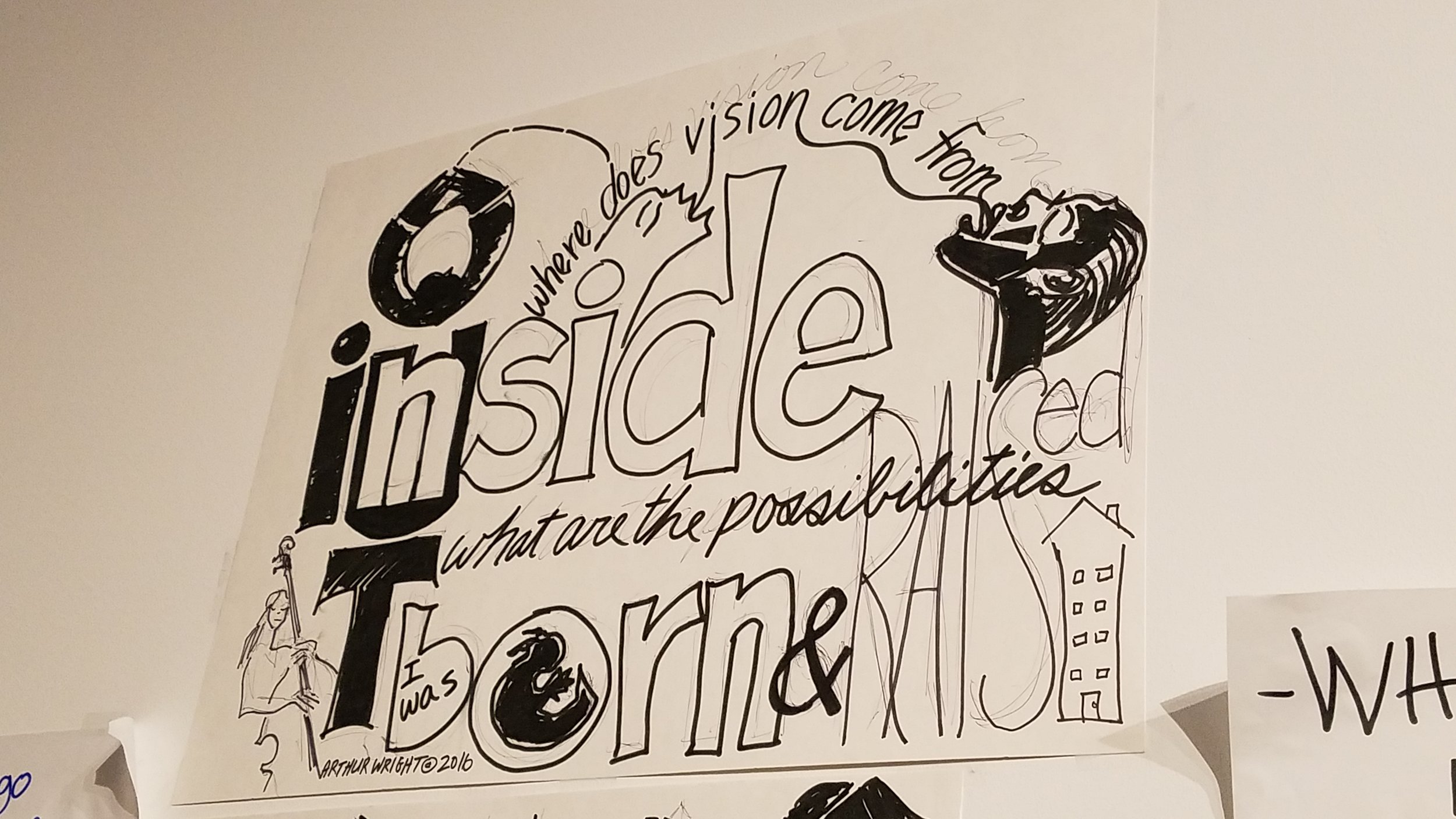
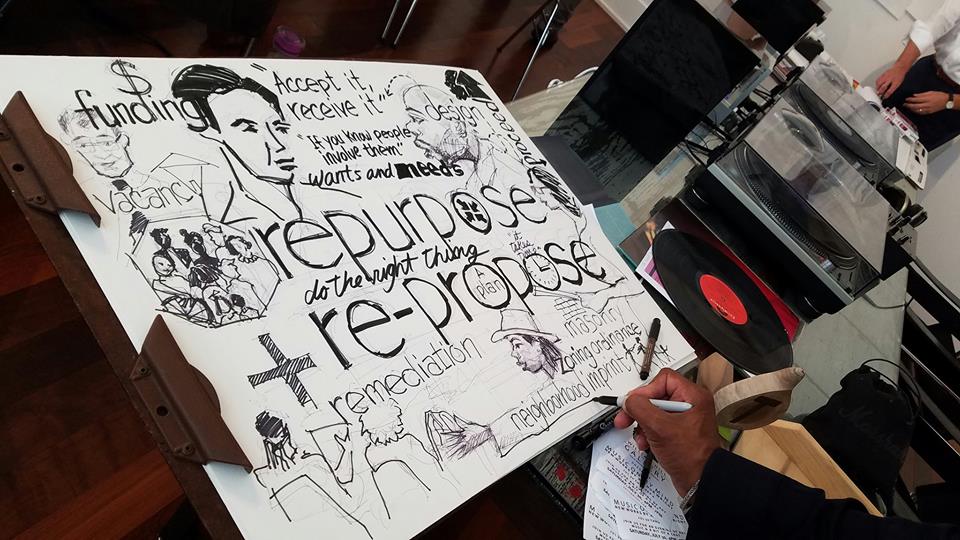
PART III
With that proposal, Theaster transitioned the Repurpose + Re-propose Session to "hang time," a free block for members to socialize while enjoying a musical performance. He walked to the windows of the Salon, brought up the blinds, and revealed a group of musicians plucking and percussing their instruments, serenading members from the lower roof of the Stony Island Arts Bank.
Interdisciplinary artist Mikel Patrick Avery and his band provided this artistic moment for the Salon. One of the underlying philosophies of Ethical Redevelopment is that artists of all kinds have something significant to contribute, need to be part of the conversation, and provide space for the often-neglected right side of the brain in discussions about city-building.
While the musicians played, members ate, drank, met each other, and began conversations that will continue for the coming year. Artistic moments and hang time have been built into each of the Salons Sessions. The ninth Principle—Platforms—includes this idea: “The event—what is happening—is beside the point. The point is that folks are meeting, exchanging, and learning. Create intentional hang time. It builds bonds, which build community.”
In order to track the development of these bonds and capture what is discussed during the Salons, we asked Arthur Wright to draw what he hears and illustrate the concepts, words, and emotions that emerge. Diligently sketching in the background, Arthur visually unfolds the discussion over the course of each Salon as a different kind of reference point for the evenings. Arthur is local artist, participated in the first Fellowship Program at the Stony Island Arts Bank, and talked about Principle #6: Place Over Time at the Public Convening in June 2016. More of his work can be found here.
The next Salon Session will be held in September. We'll see you soon.
Bring you voice to the conversation—share your thoughts on the forum.
